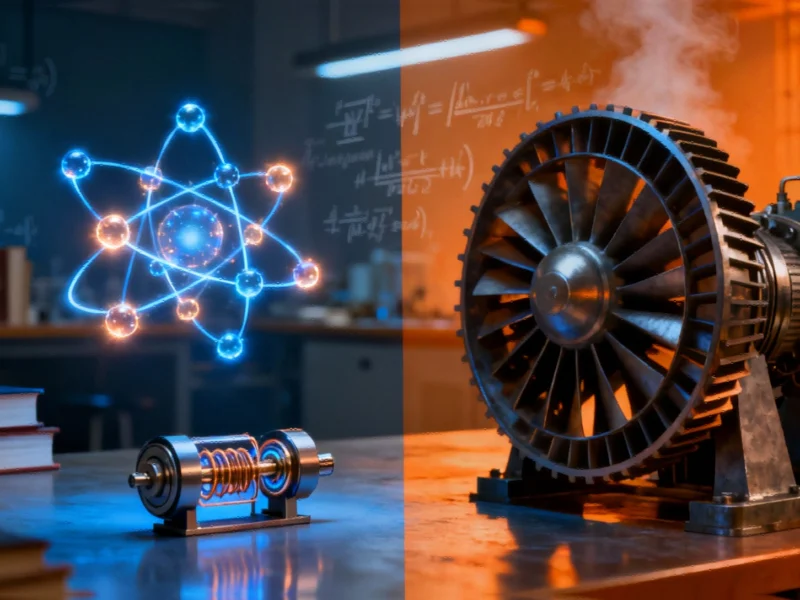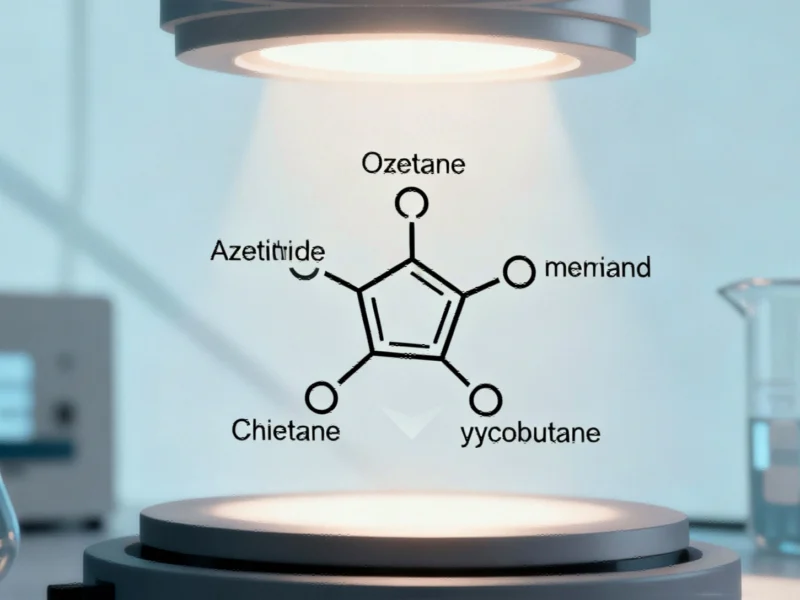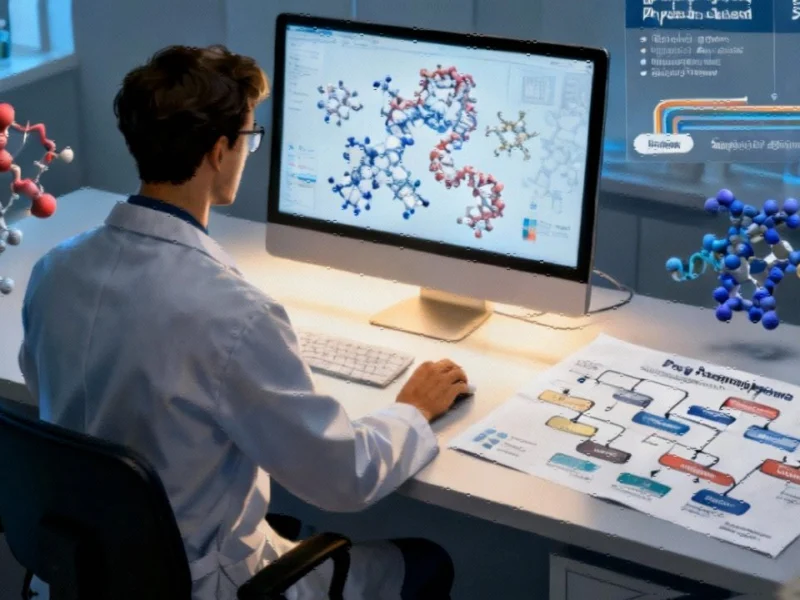In a groundbreaking theoretical advance that challenges fundamental physics, researchers at the University of Stuttgart have demonstrated that the second law of thermodynamics—a cornerstone of classical physics—breaks down at atomic scales. This quantum breakthrough challenging thermodynamics reveals that microscopic heat engines can achieve efficiencies previously thought impossible, potentially revolutionizing nanotechnology and quantum computing applications.
The research, published in Science Advances, shows that strongly correlated quantum systems operating at atomic dimensions don’t obey the Carnot principle, which has governed thermal efficiency calculations for macroscopic engines since its formulation 200 years ago. This discovery comes as industrial computing undergoes parallel transformations, with Microsoft expanding Windows 11 AI integration to third-party developers, highlighting how fundamental research and applied technology are advancing simultaneously across different domains.
Redefining Efficiency at the Quantum Frontier
Professor Eric Lutz and Dr. Milton Aguilar from the Institute for Theoretical Physics I have mathematically proven that quantum correlations—the mysterious connections between particles that define quantum behavior—enable atomic-scale engines to convert both heat and these correlations into mechanical work. “Tiny motors, no larger than a single atom, could become a reality in the future,” explains Professor Lutz. “It is now evident that these engines can achieve higher maximum efficiency than larger heat engines.”
This quantum advantage stems from what classical thermodynamics ignored: the special bonds that form between particles at microscopic scales. While Carnot’s principle focuses exclusively on temperature differences, the Stuttgart team’s generalized thermodynamic laws incorporate quantum correlations as an additional energy resource. The implications extend beyond theoretical interest, coinciding with broader technological integration trends seen in Microsoft bringing Windows AI actions to third-party applications, demonstrating how foundational advances enable practical implementations.
From Steam Turbines to Quantum Motors
The research fundamentally recontextualizes how we understand energy conversion. Traditional thermal engines like internal combustion engines and steam turbines convert thermal energy into mechanical motion, with their efficiency strictly limited by the Carnot principle. However, at atomic scales, quantum thermal machines can harness correlation energy alongside thermal energy, effectively breaking the classical efficiency barrier.
“For the first time, we have derived generalized laws of thermodynamics that fully account for these correlations,” states Dr. Aguilar. “Our results show that thermal machines operating at the atomic scale can convert not only heat but also correlations into work. As a result, they can produce more work—and the efficiency of a quantum engine can surpass the traditional Carnot limit.”
Practical Applications and Industrial Implications
The theoretical breakthrough opens numerous technological pathways:
- Medical nanobots powered by highly efficient quantum motors that could perform precise cellular-level operations
- Atomic-scale manufacturing systems that manipulate materials with unprecedented energy efficiency
- Next-generation quantum computing components with optimized thermal management
- Energy harvesting systems that exploit quantum effects for superior performance
This fundamental research advancement occurs alongside other significant industrial developments, including expanded federal charges against voting technology giants, highlighting how technological progress across sectors requires continuous refinement of our understanding of underlying principles.
The Future of Quantum Thermodynamics
Professor Lutz emphasizes that their work “deepens our knowledge of the world at the atomic level. The better we understand the physical laws that apply in these dimensions, the sooner we will be able to use them to develop technologies for tomorrow.” The potential applications span multiple industries, from pharmaceuticals to materials science to information technology.
As quantum technologies continue to mature, this research provides the theoretical foundation for designing systems that operate beyond classical thermodynamic constraints. The ability to harness quantum correlations as an additional energy resource represents a paradigm shift in how we conceptualize energy conversion at the smallest scales, potentially enabling technologies that were previously considered thermodynamically impossible.
The research team continues to explore the practical implications of their theoretical framework, working toward experimental demonstrations that could validate their predictions and accelerate the development of quantum-enhanced thermal machines.
Based on reporting by {‘uri’: ‘phys.org’, ‘dataType’: ‘news’, ‘title’: ‘Phys.org’, ‘description’: ‘Phys.org internet news portal provides the latest news on science including: Physics, Space Science, Earth Science, Health and Medicine’, ‘location’: {‘type’: ‘place’, ‘geoNamesId’: ‘3042237’, ‘label’: {‘eng’: ‘Douglas, Isle of Man’}, ‘population’: 26218, ‘lat’: 54.15, ‘long’: -4.48333, ‘country’: {‘type’: ‘country’, ‘geoNamesId’: ‘3042225’, ‘label’: {‘eng’: ‘Isle of Man’}, ‘population’: 75049, ‘lat’: 54.25, ‘long’: -4.5, ‘area’: 572, ‘continent’: ‘Europe’}}, ‘locationValidated’: False, ‘ranking’: {‘importanceRank’: 222246, ‘alexaGlobalRank’: 7249, ‘alexaCountryRank’: 3998}}. This article aggregates information from publicly available sources. All trademarks and copyrights belong to their respective owners.



